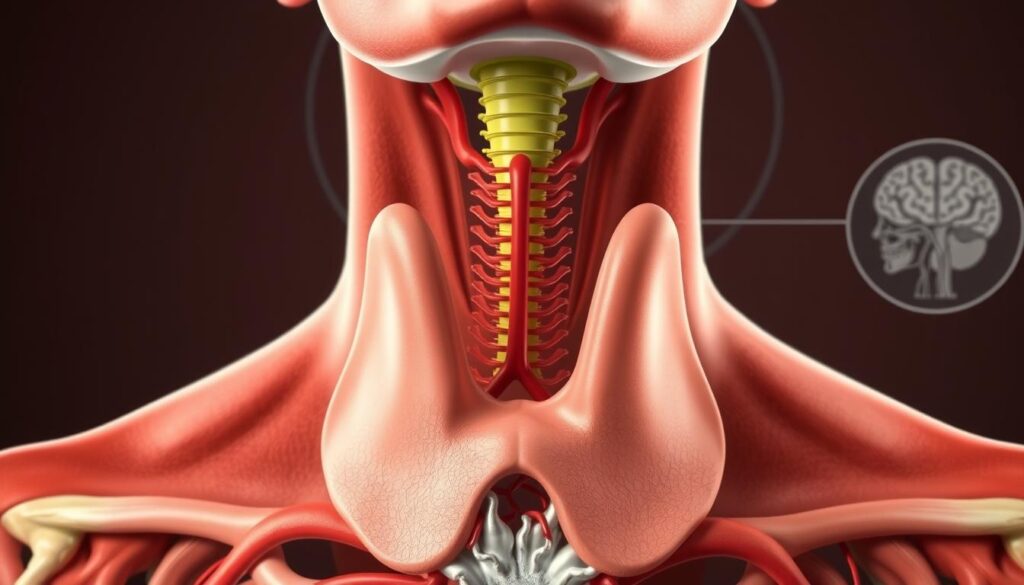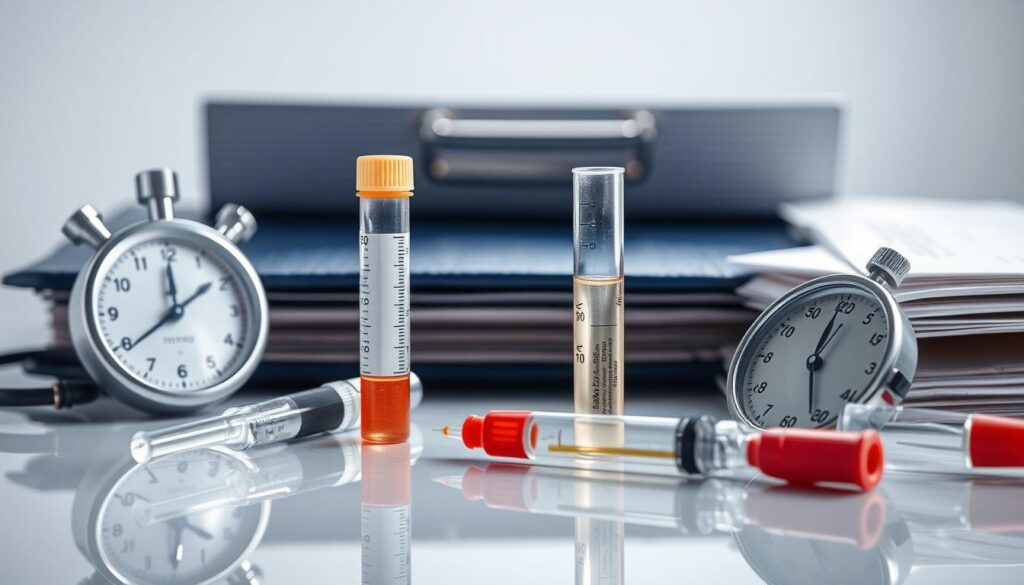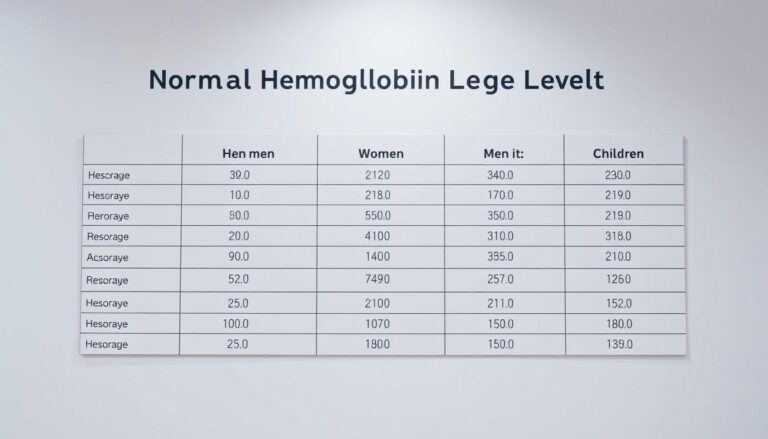Decoding Thyroid Function Tests: TSH, T3, and T4 Explained
Have you ever felt like your body was sending mixed signals—unexplained fatigue, sudden weight changes, or restless nights? For millions of Americans, these subtle clues often trace back to one tiny powerhouse: the butterfly-shaped gland in your neck. Understanding its role can feel like learning a new language, but you’re not alone.
This guide simplifies the science behind three critical markers: TSH, T3, and T4. These hormones act like your body’s thermostat, regulating energy, metabolism, and even mood. When they’re out of balance, everyday life can feel like an uphill battle.
We’ll explore how labs measure these levels and why results alone don’t tell the full story. Real-world examples will show how diet, stress, or medications might skew numbers. You’ll also learn why pairing lab work with symptoms matters most for accurate insights.
By the end, you’ll feel confident discussing your results with healthcare providers. No jargon, no overwhelm—just clear steps to take charge of your well-being. Let’s start unraveling the mystery together.
Understanding the Thyroid Gland and Its Functions
Nestled at the base of your neck, a small but mighty organ works like a conductor for your body’s energy orchestra. This butterfly-shaped gland produces chemical messengers that influence everything from your morning coffee buzz to how you burn calories. Let’s break down its two star players and the invisible communication system keeping them in tune.

The Dynamic Duo: T4 and T3
Thyroxine (T4) serves as the body’s storage form of energy-regulating hormones. Think of it as a savings account—stable and abundant. Triiodothyronine (T3) acts like cash in hand, the active form cells use immediately. Your liver and other tissues constantly convert T4 into T3, ensuring a steady supply for daily needs.
The Body’s Built-In Alarm System
A pea-sized gland in your brain acts as a hormone detective. When T4 levels dip too low, it releases TSH to kickstart production. If levels climb too high, it dials back the signal. This delicate dance explains why labs check TSH alongside free T4 (FT4) levels—they’re partners in solving metabolic mysteries.
Even slight shifts in these levels can send ripples through your system. A “low normal” FT4 reading might leave you feeling drained despite “normal” lab flags. That’s why understanding this endocrine teamwork helps explain why you might feel off when numbers look borderline on paper.
Fundamentals of Thyroid Function Test Interpretation
Ever left a doctor’s office with confusing lab numbers? Three key markers help decode your body’s energy signals: TSH, free T4 (FT4), and free T3 (FT3). Each plays a distinct role in revealing how your system manages fuel and fire.

Essential Components: TSH, FT4, and FT3
TSH acts like a thermostat, signaling when hormone production needs adjusting. High levels often mean your body’s begging for more T4. FT4 shows available reserves, while FT3 reflects active energy use. Together, they paint a complete picture of metabolic balance.
Labs use different methods to measure these markers. Some techniques might miss rare antibody interactions or overcount similar molecules. For example, biotin supplements can artificially inflate certain readings—a fact many patients overlook.
Assay Interference and Laboratory Considerations
When numbers clash with symptoms, dig deeper. A “TSH low FT4” pattern could suggest pituitary issues, not just overactivity. Always share medication lists and recent supplements with your care team—these frequently alter results.
If findings seem contradictory, request repeat analysis. Specialized labs can perform advanced assays to rule out interference. Your lived experience matters: persistent fatigue or rapid heartbeat deserve equal billing with lab flags.
Recognizing Abnormal Patterns in Thyroid Function Tests
Lab results can sometimes feel like a puzzle missing a few pieces—especially when numbers don’t match how you feel. Distinct patterns in hormone levels often reveal whether your system is underactive, overactive, or stuck in a gray area needing closer watch.
Spotting Clear-Cut Imbalances
Primary hypothyroidism shows a classic combo: TSH climbs above 10 mIU/L while FT4 drops below normal. Imagine your body’s thermostat cranked to maximum—begging for more hormones. Conversely, hyperthyroidism flips this script. TSH plunges near zero as FT4 and FT3 spike, like a car stuck in overdrive.
The Borderline Dilemma
Subclinical hypothyroidism hides in plain sight. TSH hovers between 4-10 mIU/L with FT4 still in range. Studies show 2-5% of these cases progress yearly to full-blown disease. Repeat testing every 6-12 months helps track trends.
Confusion arises when results clash. A normal TSH with low FT4 might signal pituitary issues. Always pair labs with symptoms—like unexplained weight shifts or heart palpitations. Your story guides next steps, whether monitoring or treatment.
Impacts of Medications and External Factors
Did you know your daily vitamins could skew lab results? Many common substances alter hormone measurements, creating confusing patterns that mimic real conditions. Recognizing these influences helps prevent unnecessary treatments.
Common Drugs Affecting Results
Over 20% of patients take medications that interfere with hormone balance. Birth control pills increase binding proteins, making free T4 appear normal while total levels spike. Anti-seizure drugs and steroids often suppress TSH, mimicking overactivity.
Even heartburn meds like proton pump inhibitors can reduce T4 absorption. Always share your full medication list with providers—including over-the-counter products. This transparency helps avoid misdiagnosis of issues like toxic multinodular goitre.
Biotin’s Sneaky Influence
That hair-growth supplement might distort your labs. High biotin doses (>5mg/day) falsely elevate TSH in some assays while lowering others. Many multivitamins contain 10x this amount.
Lab teams recommend stopping biotin 3 days before bloodwork. If you can’t pause supplements, request alternative testing methods. Pairing this precaution with symptom tracking ensures therapy aligns with your actual needs.
Remember: Your daily habits matter. From protein shakes to prescription drugs, external factors shape test outcomes. Addressing them empowers smarter treatment choices and protects your health journey.
Guidelines for Targeted Testing and Risk Assessment
When should you consider getting checked for hormonal balance? Not everyone needs routine screenings, but smart testing strategies help catch issues early in those most vulnerable. Let’s explore who benefits most from evaluations and how to interpret results accurately.
High-Risk Groups and When to Test
Certain conditions raise red flags for potential hormone imbalances. Autoimmune disorders like type 1 diabetes or rheumatoid arthritis top the list—up to 30% of these patients develop related issues. Others at risk include:
- People with family history of glandular conditions
- Those recovering from radiation therapy
- Individuals with unexplained cholesterol changes
TSH remains the go-to initial check because it’s highly sensitive to system changes. But when numbers sit in borderline zones or symptoms persist despite normal readings, adding FT4 and FT3 paints a clearer picture. For example, a “tsh normal ft4” result with fatigue might reveal conversion problems.
| Scenario | Recommended Tests | Why It Matters |
|---|---|---|
| Routine screening | TSH only | Cost-effective first step |
| Persistent symptoms | TSH + FT4/FT3 | Identifies conversion issues |
| Pregnancy | TSH + FT4 | Adjusts for hormonal shifts |
| Post-treatment monitoring | Full panel | Tracks recovery progress |
Labs use different reference ranges based on their equipment and local populations. Always compare results to the specific lab’s standards—what’s “normal low tsh” at one facility might be borderline elsewhere. Combining these guidelines with personal health history leads to smarter care plans tailored to individual needs.
Real-World Cases and Practical Applications
Imagine walking into your doctor’s office with lab results that seem to tell conflicting stories. Let’s explore how healthcare teams navigate these puzzles through real patient experiences.
Case Studies in Thyroid Function Test Interpretation
A 42-year-old woman arrived with rapid heartbeat and weight loss. Her labs showed low TSH alongside normal hormone levels. Further imaging revealed a toxic multinodular growth quietly overproducing T3.
Another case involved a hiker recovering from viral illness. His low TSH normal T4 pattern initially confused providers. Testing revealed transient thyroiditis triggered by infection—a common cause of temporary imbalance.
Medication effects often create diagnostic hurdles. One patient’s antidepressant raised hormone levels artificially, mimicking overactivity. Another’s biotin supplements distorted three separate lab readings before discovery.
These stories highlight why providers:
- Review full medication lists
- Consider recent illnesses
- Repeat borderline tests
Your unique history helps separate true red flags from temporary blips. By sharing symptoms and lifestyle details, you become an active partner in decoding your body’s signals.
Conclusion
Decoding health mysteries often lies in connecting the dots between numbers and lived experiences. Careful analysis of hormone patterns remains a critical part of uncovering hidden causes, from common imbalances to rare pituitary adenomas.
When results clash with symptoms, consider these scenarios:
• TSH high + FT4 normal: Early-stage issues or assay interference
• TSH high + FT4 elevated: Rare TSH-secreting adenoma
• Normal FT4/FT3 + persistent symptoms: Possible hormone resistance
External factors like medications or lab errors frequently mimic true conditions. Repeat testing helps separate temporary blips from lasting concerns. Always pair data with clinical context—what’s “normal” on paper might not reflect your body’s needs.
By blending precise measurements with personal health stories, providers and patients build actionable roadmaps. Remember: You’re the expert on your body, and labs are just one piece of the puzzle.







